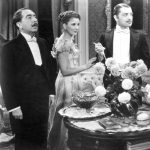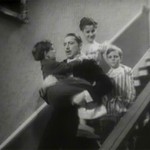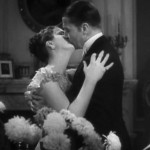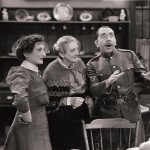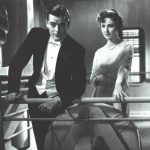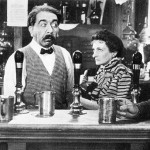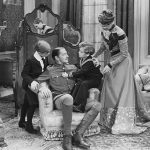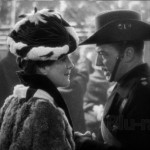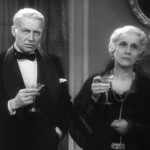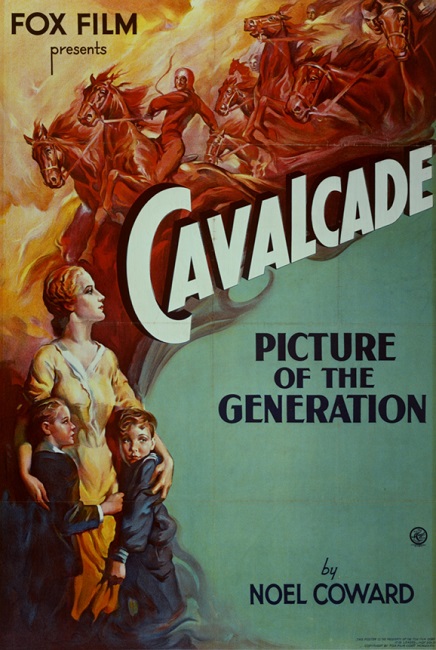
Cavalcade – 1932 – 1933
Cavalcade was a film based on a stage play by Noel Coward. This play had only been written two years before director, Frank Lloyd turned it into a movie. It was a drama that told the story of the Marryot family, spanning from 1900 to 1933. A lot happened during those 33 years that had a profound impact on the world. It started with the second Boer War in South Africa, then covered the death of Queen Victoria, the sinking of the Titanic, and the First World War. Of course, those are just the highlights.
The Marryot Family was the quintessential example of a British family and household which consisted of Clive Brook as Robert Marryot, his wife Jane, played by Diana Wynyard, their children, Edward and Joey, each of whom had a young child and an adult playing the same character in different time periods. The film also spent some time following the lives of their service staff, Ellen and Alfred Bridges, played by Una O’Connor and Herbert Mundin, respectively.
I watched the film with a little bit of hindsight. Actually, this was the only Best Picture winner that I had to watch out of order. Cavalcade was the last Best Picture winner to be made easily available to the general public. After the release of Wings, the first winner of the Outstanding Picture Oscar, in January of 2012, Cavalcade received the most votes for a region 1 release in a Fox-sponsored online poll. It was finally released in August of 2013. The last Best Picture winner I actually watched was the 1987 winner, The Last Emperor.
Interesting note: Cavalcade’s first release on DVD was actually in 2010 as part of a three-volume “Twentieth Century Fox 75th Anniversary Collection” at a price of nearly $500.00.
I think that this film was a very sugar-coated and watered down version of the dramatic events that it depicted. For example: WWI. This was actually a very horrific war in which many men gave their lives. Others survived with horrible and debilitating injuries that changed their lives forever. However, Cavalcade showed none of this. The entire WWI montage consisted of chaotic overlays of indistinct and smoky explosions, marching soldiers, and men with pain-contorted faces falling out of the scope of the camera. But none of these images were shown in the same overlaid image. There was no blood, no men dying on-screen. None of this would have been new, or even too shocking for audiences of 1933. After all, the war scenes in the 1929/1930 winner All Quiet on the Western Front were much more graphic.
Another example was the sinking of the Titanic. It was handled by showing the eldest son Edward on a ship, looking out over the railing on a calm sea, his new bride by his side. They share a lovely moment together, though the conversation turns a little morbid for a honeymoon when they talk about the fading of the initial marital bliss and dying some day. Then they walk away and the camera zooms in on a little life preserver ring with the name TITANIC printed on it. Then it cuts directly to two years later as WWI starts to take shape. Edward’s death is mentioned in passing, saying that at least he died in a time of happiness.
Granted, this was not a movie about those tragedies, so I understand why they were not focused on for too long. However, I would have liked to have seen a little something. Maybe a little more of the horrors of war or the family’s reaction to the news of Edward’s drowning.
As it was, they kept everything very clean and, shall I say, Disney? There was one thing that they did do that peeked out of that careful little mold. It concerned the story of the Bridges family. Upon returning safely from the Second Boer War, Alfred, having purchased a pub so that he could run his own business and be his own boss, becomes a drunk and abusive father. His shoddy behavior is driving his business and his family to ruin. One night, after getting sloshed, he is standing in the middle of the street and a team of horses driving a carriage runs him down, killing him. Using my modern eyes, I could tell that it was obviously a dummy getting run down, but the film editor cut it together in such a way as to make me wince. But again, when Ellen runs to his side to commence weeping over his body, there was no blood and not even a single visual indication that he had just been run over by four horses and a carriage.
As the movie didn’t particularly focus on the events so much as the family’s reaction to the events, (well… sort-of) the plot was told mostly through the eyes of the women. While the men went off to fight, the women stayed home and drove themselves to distraction with anxiety as they waited for their husbands and sons to come back home.
All except for the death of the Queen. The characters seemed to take this very personally as if a member of their own family had just passed. The children were too young to understand what was happening as the funeral procession made its way down the street, but the adults looked as if they had lost their mother. But maybe, in a way, they had. Queen Victoria was like the mother of all Britain.
But I think that the main point that the film was trying to get across was twofold. First, that times change whether we want them to or not. Sometimes that change is difficult and painful, and we have no choice but to endure. Second is that the British people, both high-born and low, have hearts that are filled with patriotism, courage and pride. I think that Jane’s little speech at the end summed up this point. It is worth repeating here in its entirety.
“Now Let’s couple the future of England with the past of England: the glories and victories and triumphs that are over, and the sorrows that are over, too. Let us drink to our sons who made part of the pattern, and to our hearts that died with them. And let us drink to the spirit of gallantry and courage that made a strange heaven out of unbelievable hell. And let us drink to the hope that one day this country of ours, which we love so much, will find dignity and greatness and peace again.”
A bit verbose, maybe, but profound and meaningful. It displays that stoic attitude and that stiff upper lip in the face of trials and hardships that are stereotypical British traits.
Interesting note: As I watched the film, I was very much reminded of the popular British television show of the 1970s Upstairs, Downstairs. In my research, I learned that this was not a coincidence. The TV program was also a spawn of the Noel Coward play, even going so far as to name the cook Mrs. Bridges.
Another interesting note: The original play ended in the year 1931, but the movie extended that by two years so that it could end in the same year in which the film was released.
As with many films that take place over long periods of time, many of the actors had to sit in the makeup chair to make them appear old. Then they have to know how to act believably aged when the cameras are rolling. The only characters that really had to worry about this were Mr. and Mrs. Marryot and their long-time friend Margaret Harris, played by Irene Browne. I’m sorry to say that I didn’t think that Diana Wynyard pulled this off very well. Sure, they made her hair white, but they didn’t give her any wrinkles and the only concession to age she made was to walk a little slowly. I’ve seen better. But she did well enough to earn a Best Actress nomination which she lost to Kathryn Hepburn in Morning Glory.
Overall it was an OK movie, though it was a little too sugar-coated for my tastes. Hollywood had already proved that it was capable of handling more than this movie gave us. Cavalcade actually won 3 Oscars, the others being Frank Lloyd for Best Director and William S. Darling for Best Art Direction.
